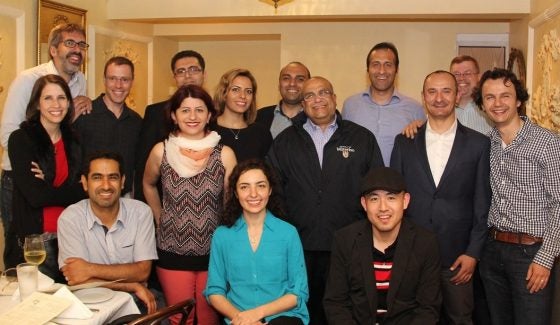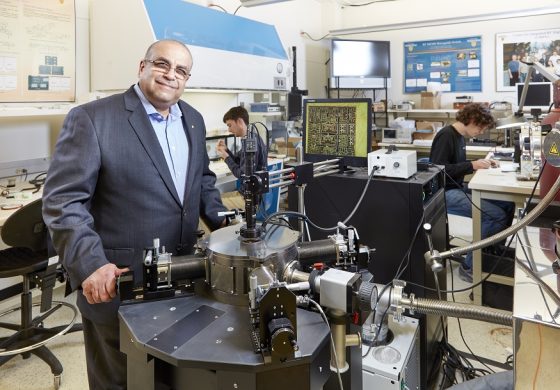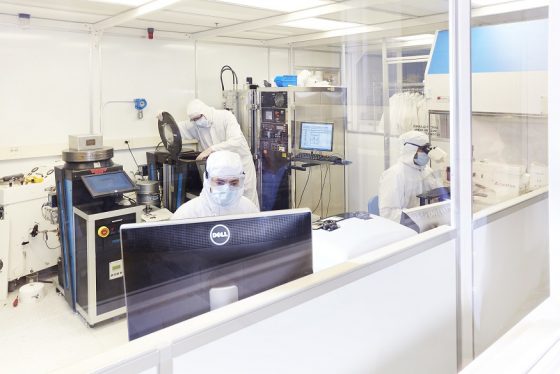When delegates gathered in San Francisco for a big annual conference in his field earlier in 2016, Raafat Mansour was eager to find out how many of his former Waterloo Engineering graduate students were among them.

The count this time around was impressive, with 13 of his former PhD students on hand – four who are now professors, six who are working in the Bay area and three who have positions in industry in Canada.
A passion for mentorship
On a long list of accomplishments – University of Waterloo electrical and computer engineering professor since 2000, founder of the Centre for Integrated RF Engineering (CIRFE), numerous published papers, filer for several patents, startup co-founder, Canada Research Chair in Micro and Nano Integrated Radio-frequency (RF) Systems – Mansour considers nurturing and developing such bright minds one of his biggest.
“So far I have seen 28 PhD students and 29 master’s students graduate, and trained 12 post-doctoral fellows,” he says. “This is what’s been most enjoyable.”
Mansour’s efforts to secure funding for his research and to act as a catalyst for ideas is helping the next generation of Waterloo entrepreneurs bring their work to market.
A case in point is ICSPI-Corp, which he co-founded with Neil Sarkar, an engineering student who did his MSc and PhD degrees in the CIRFE lab under the supervision of Mansour. The company recently released nGauge, the world’s smallest atomic force microscope, and the first 30 systems sold out in a matter of days.
For Mansour, who spent 1986 to 1999 working in COM DEV’s corporate research and development department, ICSPI-Corp underscores his mission to work with students on projects that provide real-world value and make them more marketable in the process.
“My research has always been of an applied nature,” he says, adding that CIRFE, which houses a clean room along with a characterization and test facility, has allowed students to experimentally verify novel concepts and publish their work."

Initially accepted into medicine out of high school, Mansour transferred into engineering based on a love of math and a passion for radio-frequency applications that was ignited by reading about the early development of integrated circuits and microwave technologies.
After completing his master’s degree and immigrating to Canada from Egypt, his first PhD research assistant offer came from the University of Waterloo to work under the supervision of Professor Robert MacPhie. Though other offers soon followed from institutions in the U.S. and Canada, Mansour says he has never regretted his decision to stay at Waterloo.
Creating links to radio-frequency technology

“When I teach my undergrad students, I make this statement – and the students make fun of it -that everything great in your life can somehow be attributed to Maxwell’s Equations,” Mansour says. “Communication, computers, TV, lights, etc. – they all relate to Maxwell’s Equations on a fundamental level. All the stuff I do is related to RF, but I bring other technologies. I see the link and try to bring them together.”
- Original Article from Waterloo Engineering "Educating the Engineer of the Future"